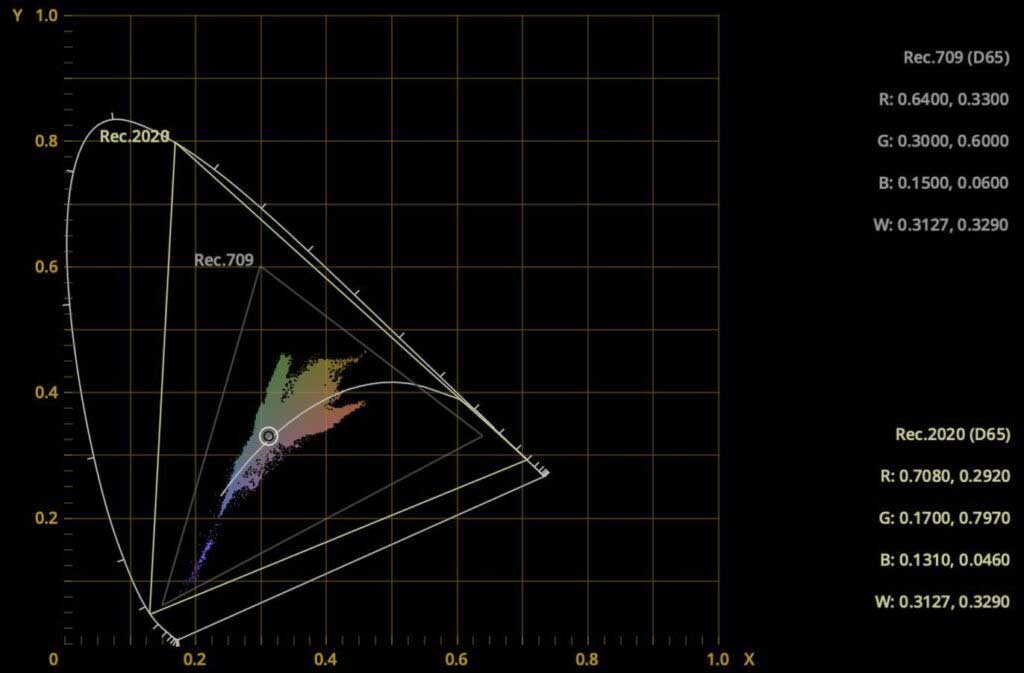Expert asserts Mario Kart World is a 'fake HDR' Nintendo Switch 2 title — ‘Mario Kart World reveals that even the highest caliber of developers aren’t taking HDR seriously’
HDR needs to be embraced 'from day one, not as an afterthought,' seems like sage advice.

Mario Kart World on the Switch 2 is guilty of implementing ‘fake HDR,’ according to recent heated reactions by a number of TechTubers. We are well aware of social media rage farming, but a coolly considered, in-depth new technical blog by Alexander Mejia, agrees that Mario Kart World was developed using “an SDR-first content pipeline with a last-minute HDR tonemap that limits the color and dynamic range.” Mejia is probably one of the leading authorities on creating HDR visual experiences, based on his experience in delivering “the world-leading Dolby Vision HDR experience to Xbox Series X and Unreal Engine.”
In fairness, the developers of Mario Kart World have set themselves up for this stinging criticism, as the flagship launch title is marketed with boasts of it supporting 4K resolution at 60FPS refresh with HDR visuals (4K60 HDR for short). However, “Mario Kart World reveals that even the highest caliber of developers aren’t taking HDR seriously,” reckons Mejia.
That tripping up over HDR isn't uncommon, though. Rather, Mejia admits that “If you’re finding it tricky to make your game’s HDR look right, you’re not alone.” The most important thing to do, to make the most of the HDR capabilities present in most TVs and monitors sold in the 2020s, is “embracing HDR from day one, not as an afterthought,” suggests the HDR pipeline consulting expert.

"Even when the user cranks the console brightness to 10,000 nits, captured peaks in game never exceed ~950 nits"

"See that Yellow Triangle Labeled Rec.2020? That’s all the color that could be used in game"
Test methodology and findings
If you are curious about how Mejia captured, reviewed, and assessed the Mario Kart World on Switch 2, he shares the full details of his hardware and capture path, the procedure, and tips for home users wishing to achieve similar insight.
Moving on to the findings, the HDR expert’s images, charts, and stats make the HDR quality deficiencies in Mario Kart World glaringly obvious. A particularly stark result comes from image brightness peak measurement. “Nintendo’s own test image peaks at only ~500 nits even if you set 10,000 nits peak brightness,” noted Mejia. “Not a good sign that they took HDR seriously.”
Also, it was observed that, even if the console brightness is cranked to 10,000 nits, “captured peaks in game never exceed ~950 nits.” That’s quite a discrepancy. It is also quite a shame, given the game art’s colorful and bright style being chained to an SDR-like color space (likely Rec.709), making no use of the extended color gamut afforded by the Rec.2020 standard.
Above: Both Godfall Ultimate Edition on XBOX Series X (left), and Mario Kart World on Nintendo Switch 2 (right) are captured in HDR, with 10,000 nits max brightness.
Get Tom's Hardware's best news and in-depth reviews, straight to your inbox.
To conclude, Mejia repeats the sentiment from some of the tastiest quotes we have included above. In short, it looks like even the best developers are not taking HDR seriously, seem to follow an SDR-first workflow, and are thus squandering the possibilities of modern consoles and TVs (or monitors).
The HDR expert finishes up by cannily touting his studio consultancy, offering help with “HDR first rendering pipelines, Dolby Vision integration, and dynamic tone-mapping strategies.” Keep that in mind as you ponder his findings.
Follow Tom's Hardware on Google News to get our up-to-date news, analysis, and reviews in your feeds. Make sure to click the Follow button.

Mark Tyson is a news editor at Tom's Hardware. He enjoys covering the full breadth of PC tech; from business and semiconductor design to products approaching the edge of reason.
-
thestryker The console itself has an edge lit LCD display and I'd be shocked if the predominant use case for a Switch device wasn't in hand. Nintendo didn't take the hardware HDR seriously so I'm not sure why anyone would worry about it much on the software side.Reply -
Alvar "Miles" Udell Right now it doesn't make a heck of a lot of sense for game developers to really care about HDR given the percentage of people who can take advantage of HDR is incredibly small and the percentage of that who have an OLED screen capable of fully rendering it is even smaller. Now if the Switch 2 had an HDR OLED edition it would be a different story, but as mentioned above it has an edge lit LCD so there's no reason for first party Switch 2 games to be geared to HDR.Reply -
HardwareExpert ReplyAlvar Miles Udell said:Right now it doesn't make a heck of a lot of sense for game developers to really care about HDR given the percentage of people who can take advantage of HDR is incredibly small and the percentage of that who have an OLED screen capable of fully rendering it is even smaller. Now if the Switch 2 had an HDR OLED edition it would be a different story, but as mentioned above it has an edge lit LCD so there's no reason for first party Switch 2 games to be geared to HDR.
Rumor has it, you can hook this video game system up to a screen that isn’t embedded in the device. The world’s leading scientists are still searching for confirmation. -
Alvar "Miles" Udell ReplyHardwareExpert said:Rumor has it, you can hook this video game system up to a screen that isn’t embedded in the device. The world’s leading scientists are still searching for confirmation.
Yes, but the problem of the vast majority of people not owning a TV capable of proper HDR, or even HDR at all, still applies. -
Will808 Disappointing but not surprising. The console's internal HDR calibration tool is a completely subtly broken too. It's not entirely properly configured to the HDR standard and far exceeds it's max brightness range, also assuming the TV is used has a setting toggled on that isn't even on every high end TV. And incompetently is set for x10 way too much granularity. Some people will properly follow the HDR calibration directions in their Switch 2 only to get a horribly misconfigured HDR that looks washed out and more like SDR. And it's not their fault, it's the Switch 2's HDR calibration tool not being good for tons of TVs despite those TVs having capable HDR. This is not just the consoles display not being good enough for proper HDR it is large software issues that impact TVs too dealing with the OSReply
This is disappointing because HDR in gaming is important. Using my Steam Deck OLED I realized that true proper HDR that's well color coded makes a bigger difference than going from Low to Epic settings in a game like Halo Infinite while having no FPS cost. Now that we have the first opportunity to code it in standard Nintendo needs to fix this. -
circadia Reply
eh, it's 2025, not 2015? surely the people buying Switch 2 are also far more likely to have a TV with proper HDR?Alvar Miles Udell said:Yes, but the problem of the vast majority of people not owning a TV capable of proper HDR, or even HDR at all, still applies. -
Alex/AT And now fake fake is fake.Reply
Whatever 'HDR' I saw and see everywhere, it looks just like overcontrast version of the normal image.
Yeah, I can imagine someone can like this subjectively, but it's far away from the sensible plane. -
Elusive Ruse Reply
Why are you defending what pretty much constitutes false advertising? If the devs thought HDR owners were so few that it wasn’t worth their efforts then they should have left it as an SDR game.Alvar Miles Udell said:Right now it doesn't make a heck of a lot of sense for game developers to really care about HDR given the percentage of people who can take advantage of HDR is incredibly small and the percentage of that who have an OLED screen capable of fully rendering it is even smaller. Now if the Switch 2 had an HDR OLED edition it would be a different story, but as mentioned above it has an edge lit LCD so there's no reason for first party Switch 2 games to be geared to HDR.
I got two OLED HDR capable screens at home and many others I know personally who have at least an HDR TV. I’m pretty sure it applies to anyone who went TV shopping the past 5 years. Hell it’s probably more difficult nowadays to buy a TV that doesn’t have HDR. -
adamboy64 Wasn't it revealed that Mario Kart World was originally penned as a Switch 1 title..?Reply
It would make sense that HDR was an afterthought. -
3JAD21 Reply
Exactly. Also, consider that, based on the hardware leaks we've seen, the hardware inside the Switch 2 was finalised in 2022. That means there were 3 years between when the developers found out the final, proper specs of the Switch 2, and the game's release. It makes perfect sense that HDR was an afterthought for the developers.adamboy64 said:Wasn't it revealed that Mario Kart World was originally penned as a Switch 1 title..?
It would make sense that HDR was an afterthought.
Slightly unrelated, but I want to correct something that was written in the article: at no point has Nintendo claimed that Mario Kart World is a 4K 60fps title, and that's because it isn't: it's a 1440p 60fps title. I've been seeing stuff like this a lot lately: people claiming, without evidence, that a plethora of games on the Switch 2 run at 4K docked, when the vast majority of them are running at either 1080p or 1440p. I think there's only, like, 3 or 4 Switch 2 games (and some Switch 1 updated games) that currently play at 4K? None of them are the same games people are claiming are 4K (some people have gone as far as to suggest that Cyberpunk 2077 runs at 4K, which is absolutely laughable).
